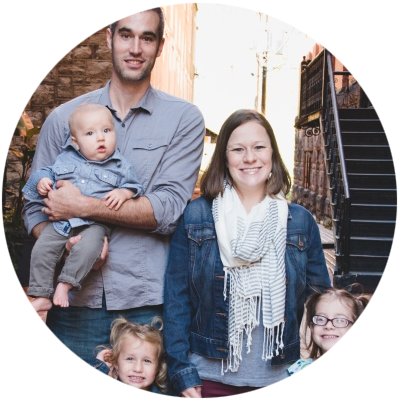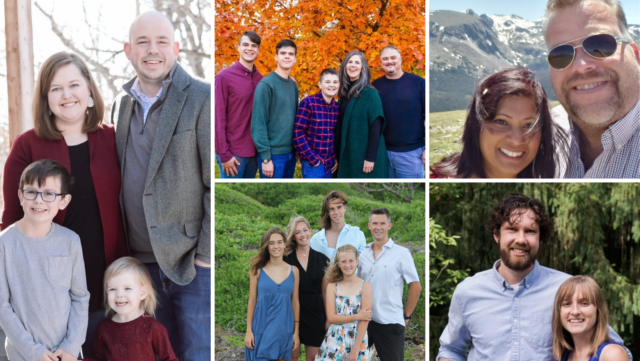If you have ever been part of a dysfunctional organization you know this all too well. When leadership breaks down thriving is difficult if not impossible. This is true in all spheres of society. Whether we are talking about business, politics, athletics, or virtually anything in between, leadership is important. The same is true for the church.
From the apostles and church fathers up to today, identifying and developing quality leadership remains an essential task of the church. It is a task that can feel especially daunting, however, for those who live in smaller communities.
From the apostles and church fathers up to today, identifying and developing quality leadership remains an essential task of the church.
As someone who has spent most of his life in a rural corner of the Rust Belt, I have experienced this reality firsthand. I have also watched as leaders blossomed before my eyes in our small-town church plant.
Together, these experiences have helped me see that small-town churches can be great places to raise up leaders, but the leadership pipeline might have to look different from that of a larger church or a church in a more urban setting. Here are some practical tips from my experience at Oil City Vineyard.
Rehab Leaders
As a new church planter, one of the things that surprised me most was how many burnt out leaders came to our church. These folks weren’t the ambitious, opportunistic folks I had been warned about as a church planter; rather, they were leaders who had served local churches to the breaking point.
In smaller churches and places where talented leaders are scarce (especially in specialized ministries like children’s ministry and music ministry), churches are inclined to lean hard or even exclusively on one leader or couple until something has to give.
We quickly found that we had a large quantity of leaders, but very few of them were healthy enough to begin leading right away. Rather than push them into service, we intentionally spent time investing in them as people. In many cases as we cared for them as people they began to find a renewed sense of passion to serve God and his people. Now well over half of our leadership team consists of folks I would call rehabbed leaders.
Implement Good Systems
One of the ways we rehabbed leaders was by striving to implement good systems, systems designed to meet the needs of the church while simultaneously taking care of people. Things like a six-to-ten-week childcare rotation made childcare at our church doable for a much larger number of people.
When good systems were in place we found that the child care worker who wanted little to do with kids because she had been the childcare worker at her previous church for years was now willing to help.
We implemented similar systems with our worship and set-up teams. I even tried to demonstrate this rhythm by opening up our pulpit once a month for folks from our church to preach instead of me. As a bi-vocational pastor, this has been a blessing for me and the congregation.
Include All Generations
In order to be a small-town church that can effectively raise up leaders, we have to avoid the two misperceptions of American culture. The first misperception is that there are no young people—or at least no talented young leaders—in rural America. I can tell you from experience this is not at all true.
Even in socially and economically depressed areas, there are millennials and Gen Z-ers who call small places home and who have amazing leadership potential. We need to seek them out and give them opportunities to lead, even if there are some failures along the way.
The second cultural misperception we have to reject has to do with a glorification of youth culture to the detriment of age and wisdom. Just look at the seemingly “hip” churches, how many grey heads do you see? This is a false representation of vibrant leadership.
I’ve come to realize that recently retired folks are among the best leaders we can find. These sages of the church have an immense contribution to make and the time to make it if we let them.
Talk the Talk, Walk the Walk
Finally, if we want to see leadership in small places we have to call it out and model it. Many small churches have longstanding leaders. This is a blessing, but it can also be a challenge to our efforts to raise up more leaders. We have to let people know that we are committed to training up more leaders. We also have to model effective, humble, Christ-centered, leadership ourselves if we want new leaders to emerge. People want to be part of what they sense is healthy and meaningful.
There are challenges, to be sure, about raising up leaders in small places, but these challenges are not impossible to navigate. Whether we live in a city or a country village, God has put leaders in our area. We need to pray for eyes to see to them and hearts to meet them where they are knowing that God loves them as people first and foremost.
Want more content on leadership development?
Subscribe to the Multiply Vineyard Newsletter and receive our Launching Leaders eBook
 Charlie Cotherman is the senior pastor of the Oil City Vineyard and the Administrative Director for the Project on Rural Ministry at Grove City College. After spending time in various places and pursuing various vocational avenues Charlie has a settled into confidence about his three callings —husband/father, pastor, and scholar/teacher. If Charlie isn’t changing Benton’s diaper or waiting for Elliana and Anneliese to be done with gymnastics, you’ll probably find him with his nose in a book or enjoying coffee and a conversation with a friend at a local cafe.
Charlie Cotherman is the senior pastor of the Oil City Vineyard and the Administrative Director for the Project on Rural Ministry at Grove City College. After spending time in various places and pursuing various vocational avenues Charlie has a settled into confidence about his three callings —husband/father, pastor, and scholar/teacher. If Charlie isn’t changing Benton’s diaper or waiting for Elliana and Anneliese to be done with gymnastics, you’ll probably find him with his nose in a book or enjoying coffee and a conversation with a friend at a local cafe.










